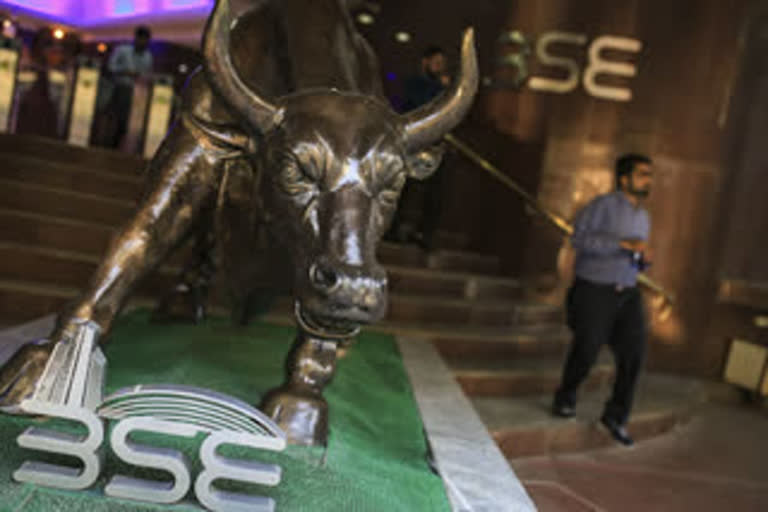New Delhi: Retail investors, ordinary household investors like you and me, have moved to stock markets in a big way during the last 14 months when the country was in the grip of Covid-19 global pandemic, showed a research by SBI, which suggested that increased investment by individual investors can partly meet the country’s huge infrastructure financing needs.
According to the data compiled by Soumya Kanti Ghosh, Group Chief Economic Adviser, State Bank of India, the number of individual investors in the market has increased by a whopping 142 lakh in FY 2020-21.
The SBI report said out of the 142 lakh new accounts opened last year, 122.5 lakh new accounts were opened at CDSL and 19.7 lakh were opened at NSDL.
This trend has continued in the current fiscal as well as 44.7 lakh new retail investor accounts have been added during the first two months (April-May) of the current year.
It is not just the sheer number of new accounts opened for the trading of shares, the share of individual investors in total turnover on stock exchange has also gone up from 39% in March 2020 to 45% in March 2021, according to the NSE data.
Moving from conventional saving to stock markets
Indian middle class investors prefer to invest in traditional saving instruments like bank deposits, fixed deposits, provident fund accounts, post office saving and fixed deposit schemes, LIC among others, while some others invest into precious metal and real estate.
“Household savings are the major contributors to the overall savings in India. Of the household savings, a significant portion, around 41% is in financial savings,” said the SBI report.
However, a steady rise in stock markets witnessed during the Covid-19 lockdown period has attracted these middle class individual investors towards stock markets.
Globally, there has been a significant increase in the market capitalization in stock markets across the world in the last one year but in the case of India it has been higher than other major countries. The market capitalization of Sensex has increased by 1.8 times its value one year ago.
India’s benchmark 30-shares index- BSE Sensex – increased from 28,265 at the beginning of April 2020 to above 52,000 now.
“This has led to increased investment in stocks and mutual funds in H2 (October-March period) FY 2020-21 and this higher retail participation in stock markets may become more of a self-fulfilling prophecy,” Ghosh said in the report.
Also Read: Memorable Friday: Sensex touches lifetime intra-day, closing highs
What led to retail investors moving to stock markets
There appears to be three reasons that led to movement of individual investors from conventional methods of savings to stock markets which is considered to be more rewarding but riskier at the same time.
First, in order to encourage investment and consumption amid the pandemic, RBI cut the benchmark interest rates that led to softening of interest rates on loans and deposits.
According to Ghosh, lower rates in other saving avenues amidst the low interest rate regime has led to greater interest by individuals in the stock market while another reason could be the significant increase in the global liquidity.
In addition to this, people were forced to spend time indoors due to Covid lockdowns that may be another reason for individuals’ tilt towards the stock market trading as they had ample time to study the trends and make investment decisions.
“However, it is yet to be seen if this increasing retail participation is transitory or the beginning of long term behavioural change? Ghosh asked in the report.
Favourite sectors for investment
The SBI report says within the retail segment, maximum allocation has been to financials, followed by consumer staples, energy and information-technology companies.
There was also a renewed interest in healthcare stocks and in financial stocks.
“This clearly indicates the movement in Indian stock markets is increasingly being clearly interlinked with a supposed infrastructure power play in coming days,” said the report.
Infrastructure financing
The report said if the trend in the increased retail participation becomes the norm then it could also enable a larger resource pool for financing India’s infrastructural requirements.
The report says the share of savings in shares and debentures to total household financial savings, which was at 3.4% in FY 2019-20, is likely to increase to 4.8% to 5.0% in FY 2020-21.
As a percentage of GDP, it increased from 0.4% in FY 2019-20 to 0.7% in FY 2020-21 but it was still much lower than 36.5% in the USA.
“If we consider this to increase further to 1% of GDP and even if half of this can be tapped and channelized into infrastructure spending, then it can cover around 24% of the IBER (other than Railways) of the Government in FY22,” said the report.
Also Read: Investors blindly beeline for Oxygen stocks




